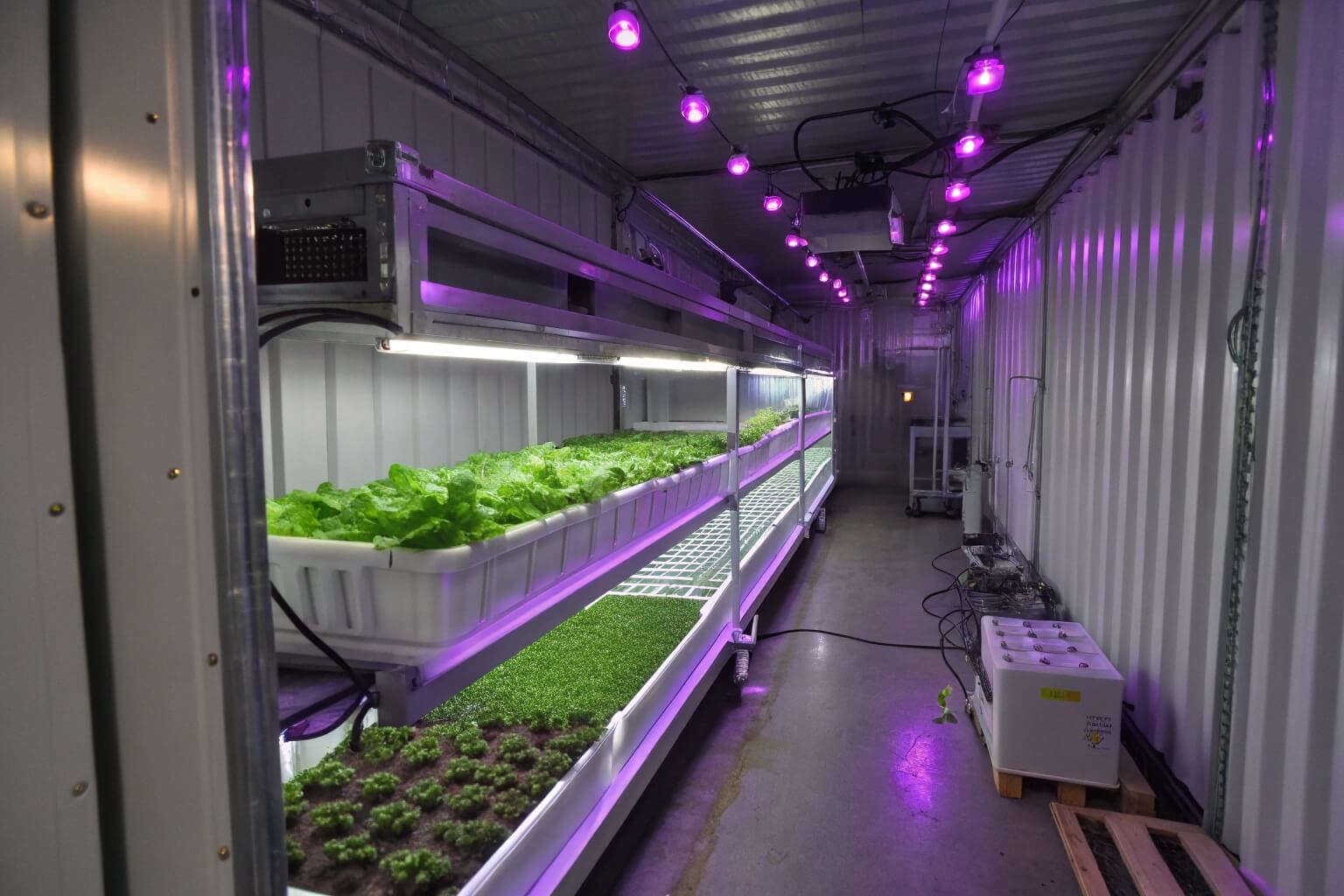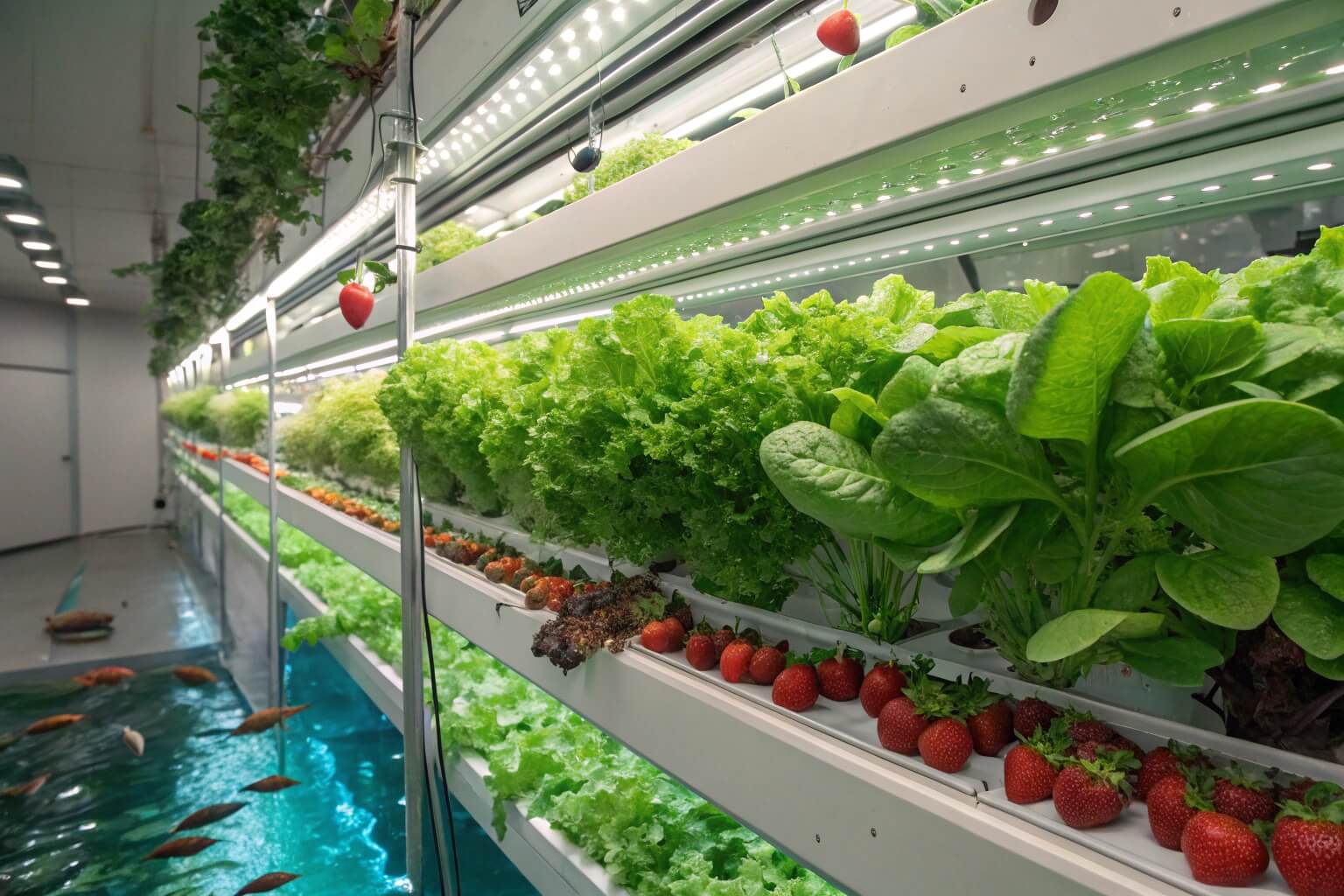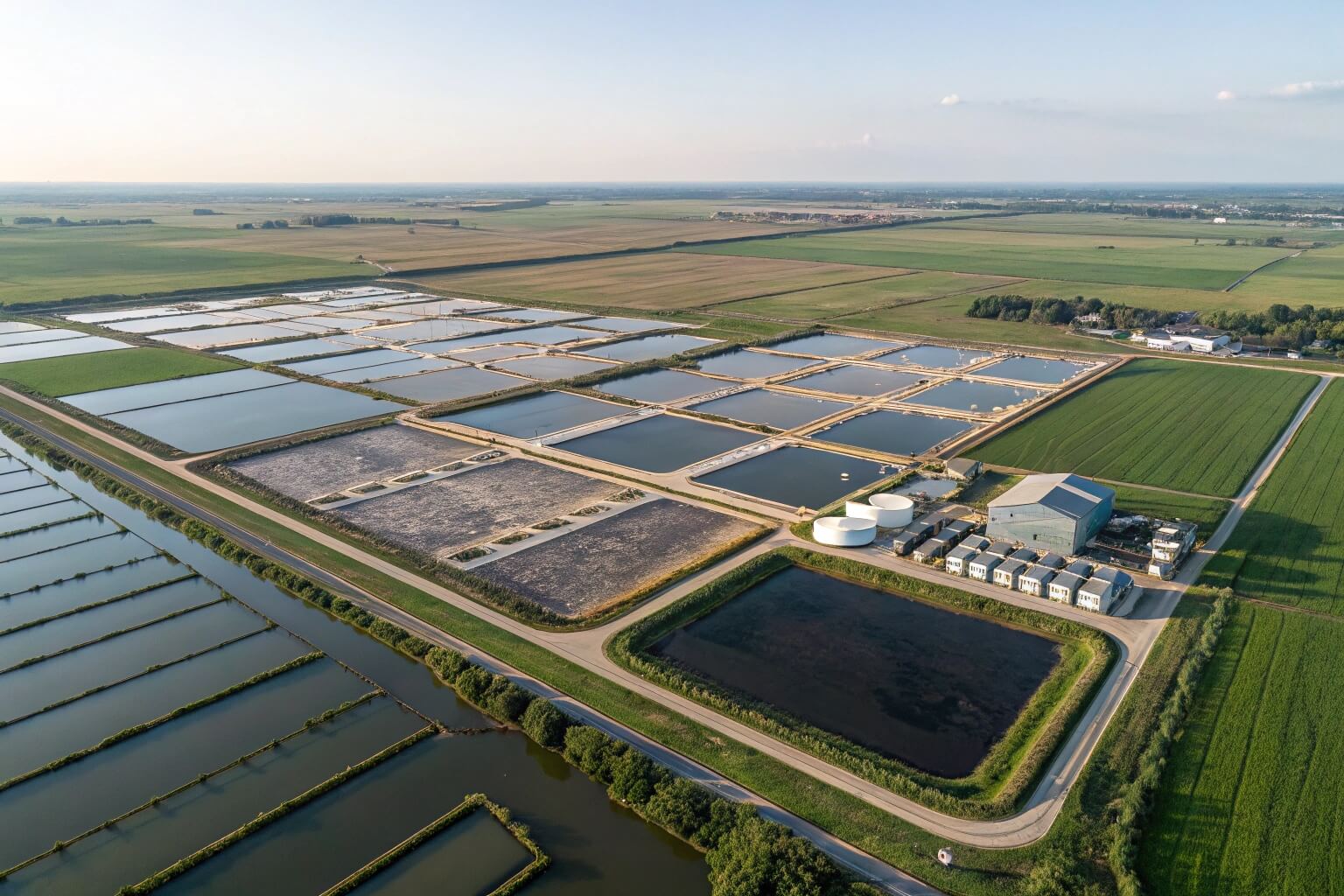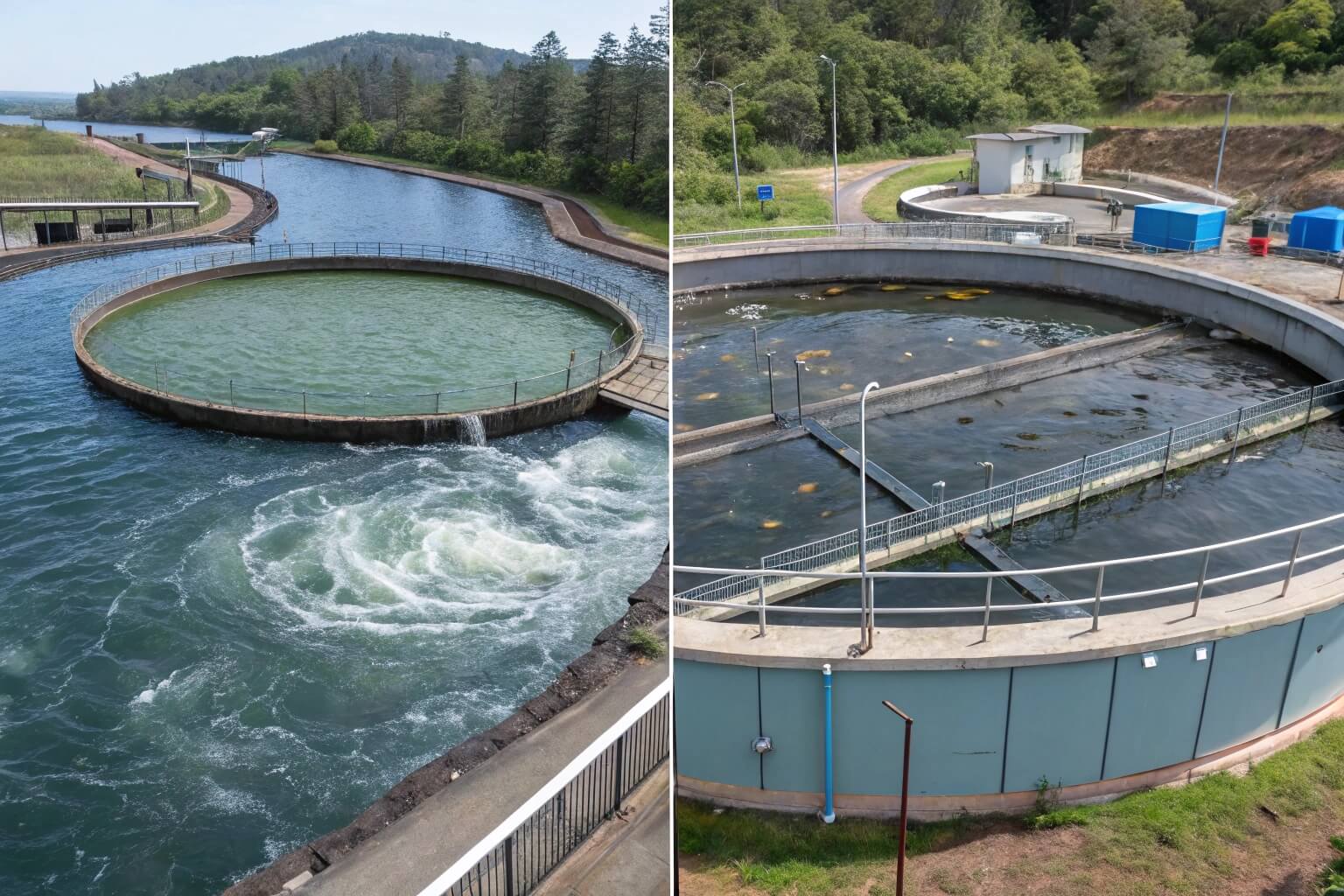Can you farm tilapia in a shipping container?
Struggling with limited space for farming? Finding ways to grow food efficiently, especially in urban areas or tough climates, can be hard. Shipping container farms offer a surprising, compact solution for modern agriculture.
Yes, you absolutely can farm tilapia in a shipping container. These controlled environments allow for efficient aquaculture. Tilapia are a popular choice because they are hardy and grow fast in these systems, often combined with plant cultivation (aquaponics).

It sounds interesting, right? But how does it actually work, and what do you need to consider? Let's look deeper into the details, like how many fish you can keep, what else grows well in these setups, and what kind of tanks are best.
How many tilapia in a 100 gallon tank?
Overcrowding tanks leads to sick fish and low yields. Getting the number of fish right seems tricky if you're new to this. Proper calculation ensures your tilapia stay healthy and you get a good harvest.
For a 100-gallon tank, a common guideline is roughly 5-10 tilapia, aiming for about 1 pound of fish per 5-10 gallons at harvest. This depends heavily on your filtration and aeration system's capacity to handle waste.

Key Factors Influencing Stocking Density
The simple "gallons per fish" rule is just a starting point. The real limit is your system's ability to maintain good water quality1. More fish mean more waste (ammonia). Your filter needs to process that ammonia quickly into less harmful nitrates. Good aeration is also vital. Fish need oxygen, and more fish use more oxygen. So, the power of your pump and the efficiency of your biofilter2 are more important than just the tank size. You also need to consider the final size of the fish. You start with small fingerlings, but they grow much larger. You need to plan for their size at harvest time. I've seen people start with too many, thinking they are small, only to run into water quality problems later.
Why Filtration Matters Most
Think of your filtration system3 as the life support for your fish. Mechanical filtration removes solid waste. Biological filtration uses beneficial bacteria to convert toxic ammonia (from fish waste and uneaten food) into nitrite, and then into nitrate. Nitrate is much less toxic to fish and can be used by plants in aquaponics systems. If your biofilter can't keep up with the ammonia produced by your fish, levels will rise, stressing or even killing them. So, investing in a properly sized, high-quality filtration system is crucial if you want to stock more fish successfully. Regular water testing is also essential to monitor ammonia, nitrite, and nitrate levels.
Flexible Tank Solutions
Sometimes, standard rigid tanks don't quite fit the unique space of a container or a specific project need. This is where flexible options come in handy. At Bancy, we provide custom-sized soft water bladders4 and collapsible tanks5. These can be tailored to fit specific dimensions within a container. They are also easier to install and move compared to bulky rigid tanks. Our double-welding technology6 ensures they are durable and leak-proof, which is critical for any aquaculture setup. This flexibility allows farmers to maximize their growing space and adapt their systems more easily.
| Feature | Low Density | High Density |
|---|---|---|
| Growth Rate | Potentially faster per fish | Slower per fish, higher total yield |
| Water Quality | Easier to manage | Requires robust filtration |
| Disease Risk | Lower | Higher due to stress |
| Filtration | Standard system may suffice | Advanced system needed |
What can you grow in a shipping container farm?
Think container farms are just for lettuce? You might feel limited by the enclosed space and lack of soil. But the controlled environment actually allows for a surprising variety of crops and even fish farming.
Shipping container farms are versatile. You can grow leafy greens like lettuce and kale, herbs like basil, strawberries, and even farm fish like tilapia. These setups often use hydroponic or aquaponic systems perfectly suited for the controlled indoor environment.

Aquaponics: The Fish-Plant Synergy
This is where tilapia farming7 in containers gets really interesting. Aquaponics combines aquaculture (raising fish) with hydroponics (growing plants without soil). It creates a closed-loop system8. The fish produce waste, which is rich in ammonia. Bacteria in a biofilter convert this ammonia into nitrates. This nutrient-rich water9 is then pumped to the plant growing beds. The plants absorb the nitrates as fertilizer, effectively cleaning the water. The clean water then returns to the fish tank. It's an efficient system. Tilapia are great for this because they are hardy and tolerate varying water conditions. Leafy greens, herbs, and fruiting plants like strawberries or peppers grow very well using the nutrients from tilapia waste. I find this synergy fascinating – it mimics a natural ecosystem but in a controlled box.
Hydroponics and Other Options
If you're not interested in raising fish, you can still use a shipping container for pure hydroponics. In this case, you grow plants in water using mineral nutrient solutions instead of fish waste. You can grow the same types of plants as in aquaponics: lettuce, spinach, kale, basil, mint, etc. Hydroponics requires careful management of the nutrient solution to ensure plants get everything they need. While tilapia are common in container aquaponics, other fish like catfish or ornamental fish could potentially be raised too, depending on the system design and market demand. The choice depends on your goals – food production, research, or education.
Environmental Control is Crucial
Whether aquaponics or hydroponics, success in a container farm hinges on controlling the environment. You need artificial lighting, usually LEDs designed for plant growth, because there's no sunlight inside a metal box. You also need heating, ventilation, and air conditioning (HVAC) to manage temperature and humidity. Sensors and automation systems can help maintain optimal conditions consistently. This control is what allows for year-round production regardless of the outside climate. However, it also means higher energy consumption and setup costs compared to traditional farming. Reliable water containment is also key. At Bancy, we make sure our tanks and liners, like PVC or TPU options, are food-grade, UV-resistant, and durable for these demanding environments.
| Feature | Aquaponics | Hydroponics |
|---|---|---|
| Nutrient Source | Fish Waste | Mineral Nutrient Solution |
| System Input | Fish Feed | Nutrient Salts, Water |
| Outputs | Fish, Plants | Plants |
| Complexity | Higher (balancing fish & plants) | Lower (managing nutrients) |
| Suitable Crops | Leafy Greens, Herbs, some fruit | Leafy Greens, Herbs, many fruits |
How is tilapia farmed in China?
Hearing about massive tilapia farms in China might make container farming seem tiny. It's true, their scale is huge. Understanding their methods helps put different farming approaches into perspective.
Tilapia farming in China is often very large-scale. They use various methods including traditional earthen ponds, net cages in lakes, and modern intensive recirculating aquaculture systems (RAS). High stocking densities and well-developed infrastructure make China a global leader in tilapia production.

Scale and Methods: A Different World
China is the world's largest producer of farmed tilapia. Much of this production comes from traditional methods like large earthen ponds, often covering vast areas. They also use net cages suspended in lakes and reservoirs. These methods rely heavily on natural water bodies and the local climate. In recent years, more intensive methods like recirculating aquaculture systems (RAS)10 have also gained traction, especially for higher-value markets or where water resources are limited. These RAS systems are closer in concept to container farms, as they control water quality and recycle water, but they are usually implemented on a much larger scale than a single shipping container. The sheer scale of Chinese tilapia farming is geared towards massive production volumes, primarily for export markets.
Technology and Intensity Levels
The technology used varies widely. Traditional pond farming is relatively low-tech, relying on natural processes and supplemental feeding. Cage culture is similar but concentrates fish in specific areas. Intensive RAS represents the high-tech end. These systems use sophisticated filtration (mechanical and biological), oxygenation, and water quality monitoring to support very high fish densities. While container farms also use technology for environmental control and water filtration (often a form of RAS or aquaponics11), they operate on a micro-scale compared to large Chinese RAS facilities. Container farms focus on maximizing production within a very small footprint, often targeting local or niche markets with fresh, sustainably grown products.
Environmental Considerations
Large-scale pond and cage culture can have significant environmental impacts. Issues include water pollution from fish waste and uneaten feed, potential disease outbreaks spreading to wild populations, and high water consumption. While RAS systems use much less water, they require significant energy for pumping and filtration. Container farming, especially using aquaponics, aims for higher sustainability. The closed-loop nature minimizes water discharge, and waste is utilized by plants. Energy use for lighting and climate control is a factor, but the small scale and potential for local production can reduce transportation impacts. From my perspective at Bancy, providing reliable containment solutions like our double-welded tanks is crucial for both large RAS and smaller container systems to prevent leaks and ensure efficient water management.
| Feature | Traditional Pond Farming (China) | Container Aquaponics |
|---|---|---|
| Scale | Very Large | Small / Modular |
| Water Use | High / Flow-through or Static | Very Low / Recirculating |
| Environmental Control | Low / Relies on Climate | High / Artificial Environment |
| Technology | Low to Medium | Medium to High |
| Market Focus | Export / Mass Market | Local / Niche Market |
What kind of tank is best for tilapia?
Choosing the wrong tank can cause leaks, harm your fish, or just not fit your space properly. It feels like a critical decision with many options. The right tank is fundamental for healthy fish and a long-lasting system.
The best tank for tilapia is durable, non-toxic (food-grade), and sized for your target stocking density. Materials like HDPE plastic or tanks lined with PVC/TPU are common. Round tanks often provide better water circulation for waste removal compared to square corners.

Material Matters: Durability and Safety
The tank material is super important. It must be 'food-grade12,' meaning it won't leach harmful chemicals into the water that could affect the fish or the people eating them later. Common choices include high-density polyethylene (HDPE) or polypropylene rigid plastic tanks. These are durable but can be bulky and expensive. Another popular option, especially for custom setups or container farms, is using a structural frame with a flexible liner. At Bancy, we specialize in liners and flexible tanks13 made from robust PVC or TPU materials. These materials are strong, resistant to punctures and UV light, and certified safe for potable water and aquaculture. Our double-welding technique14 adds an extra layer of security against leaks, which is vital in a closed system.
Tank Shape and Circulation
Tank shape influences water flow and cleaning efficiency. Round tanks are often preferred in aquaculture because they allow water to circulate easily, creating a gentle current that helps move solid waste towards a central drain. This makes cleaning easier and improves overall water quality. Rectangular tanks can sometimes have "dead spots" in the corners where water flow is poor and waste can accumulate. However, rectangular tanks might utilize the space inside a shipping container more efficiently. The choice depends on your specific layout, filtration design, and cleaning strategy. We can customize flexible liners or collapsible tanks to fit both round and rectangular frames.
Why Flexible Tanks Shine in Containers
Shipping containers have fixed dimensions and access can be tight. This is where flexible tanks15 offer real advantages. Rigid tanks can be difficult to maneuver into place. Collapsible tanks or liners with frames, like the PVC liner fish tanks we offer at Bancy (with galvanized pipe, galvanized sheet, or plastic frames), can be brought in easily and assembled inside. They are also highly customizable16. Need a specific height or diameter to fit around other equipment? We can make it. This adaptability is perfect for the modular nature of container farms. Plus, if you ever need to reconfigure or move your farm, flexible tanks are much easier to dismantle and transport than heavy, rigid ones. Their durability17, ensured by quality materials and techniques like our double welding, means they can handle the demands of continuous fish farming.
| Feature | Rigid Tanks (e.g., HDPE) | Bancy Flexible Tanks/Liners (PVC/TPU) |
|---|---|---|
| Installation | Can be difficult in containers | Easier assembly inside container |
| Customization | Limited standard sizes | Highly customizable size & shape |
| Portability | Heavy, difficult to move | Lightweight, collapsible, portable |
| Durability | Generally durable | Durable (PVC/TPU), Double-Welded seams |
| Space Use | Can be bulky | Conforms to frame, space-efficient |
Conclusion
So yes, container tilapia farming is definitely possible and it's a growing field. Success depends on managing fish density carefully, choosing the right companion crops if using aquaponics, and selecting durable, safe tanks for your system.
-
Water quality is vital for fish survival. Discover insights on maintaining optimal conditions for your aquatic life. ↩
-
A biofilter is essential for converting harmful substances in water. Learn more about its importance in aquaculture systems. ↩
-
Understanding filtration systems is crucial for fish health and water quality. Explore this link to enhance your aquaculture knowledge. ↩
-
Explore how custom-sized soft water bladders can optimize space and efficiency in aquaculture systems. ↩
-
Discover the benefits of collapsible tanks for flexibility and ease of installation in aquaculture setups. ↩
-
Learn about the advantages of double-welding technology in creating durable and leak-proof tanks. ↩
-
Explore the advantages of tilapia farming in aquaponics to understand its efficiency and sustainability in food production. ↩
-
Learn about closed-loop systems in aquaponics to see how they enhance sustainability and resource efficiency in farming. ↩
-
Discover the role of nutrient-rich water in aquaponics and its importance for plant growth and fish health. ↩
-
Explore this link to understand how RAS technology enhances fish farming efficiency and sustainability. ↩
-
Learn about aquaponics, a sustainable farming method that combines fish and plant cultivation for efficient resource use. ↩
-
Understanding 'food-grade' materials is crucial for ensuring safety in aquaculture. Explore this link to learn more about safe tank materials. ↩
-
Flexible tanks offer unique advantages in aquaculture setups. Discover their benefits and applications by exploring this resource. ↩
-
The double-welding technique is vital for preventing leaks in tanks. Learn how it enhances durability and safety in aquaculture systems. ↩
-
Explore how flexible tanks can optimize space and efficiency in shipping containers, making them a smart choice for various applications. ↩
-
Learn about the customization options available for flexible tanks, ensuring they meet specific needs for container farms. ↩
-
Discover the durability features of flexible tanks that make them ideal for the demanding environment of fish farming. ↩